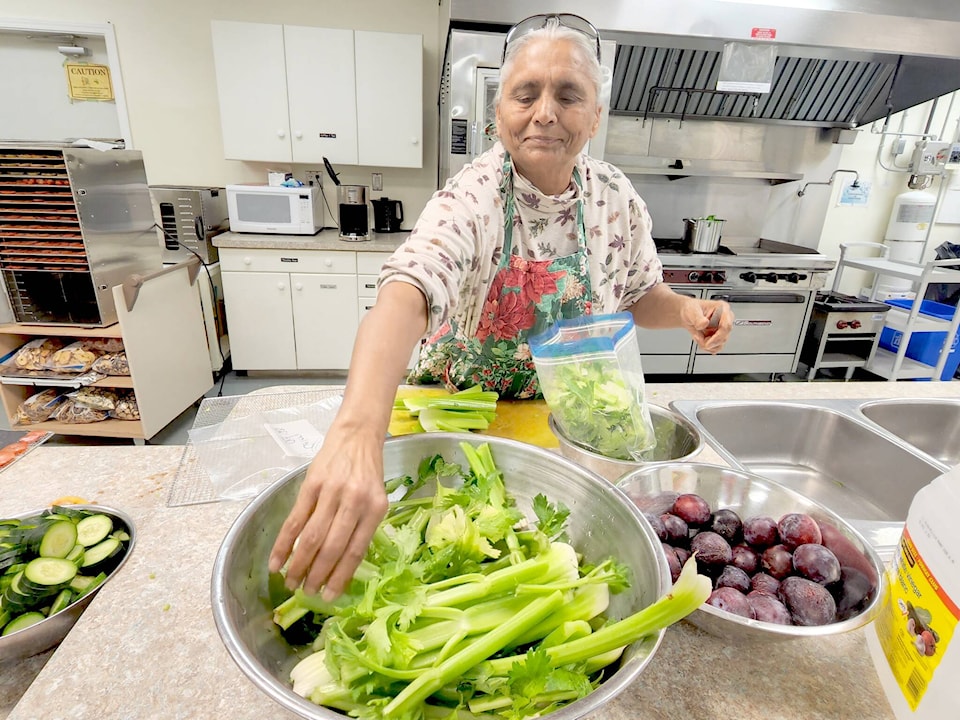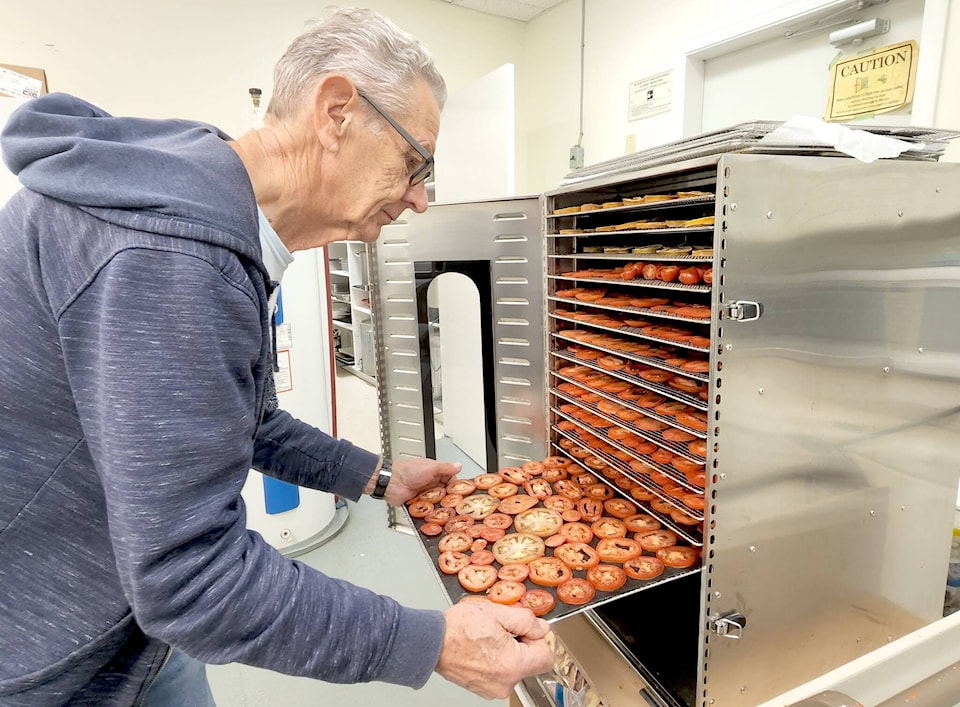A food rescue initiative in Grand Forks is steadily growing as more people become aware of it and get involved with helping cut down on food insecurity and otherwise edible goods ending up in a landfill.
Boundary Food Recovery is well-supported, but it’s looking to eventually expand to take in more food as demand for their services grows.
Right now, though, space is limited.
“Currently we work with one grocery store, Extra Foods, soon to be No Frills, we have a cost share with the Gospel Chapel to make use of their kitchen space and their kitchen space is limited so we can’t expand at this point,” said Tammy Battersby, social enterprise co-ordinator for Boundary Community Futures. “Should we get a bigger space, we can look at gleaning from other grocery stores, eventually.”
From Monday to Friday, volunteers for the program work in the Gospel Chapel Grand Forks’ kitchen, sorting through donations to determine what can be sent out as-is, chopped or dehydrated and packaged for soup ingredients.
Inside the kitchen, a shop is set up consisting of trays of fresh food where partner organizations can pick up fresh ingredients needed for their clients. The less-than-perfect, slightly overripe or otherwise not aesthetically pleasing items are processed and frozen, put in an industrial-sized dehydrator or turned into soup.
Of the 100 per cent of food that comes in, 70 per cent of the produce goes back to the nonprofits they work with, 13 per cent goes to livestock and animal feed, and the rest get dehydrated or processed and frozen, turned into soup and apples into applesauce.
Soups are all gluten-free, sodium-free and pepper-free, as well as low-glycemic. People are free to add to the soups to flavour it as they see fit, said Battersby.
“This helps keep allergens out, but it also means my cooks really have to be creative and find ways to make soups taste like soup,” said Battersby.
It’s not unusual for the volunteers working with Boundary Food Recovery to go through hundreds of pounds of produce, meat and dairy every month, processing and preparing it for partner organizations and clients looking to stock shelves and freezers.
Lately, it’s been busier than normal as Extra Foods changes to a No Frills. Battersby said it’s likely down to human nature, as people tend to migrate away from a business as it changes and renovates. Their produce section has grown during the transition, she said, meaning at least temporarily there is more coming to the program.
This will likely balance out as more people return to the store after the transition is complete.
“The extra food is good for us, but I expect that won’t last after they change in November,” she said. “We will still be working with Loblaws and No Frills. We’ve gone from an average of 6,000 pounds a month to a high note of these past months of 11,500 pounds. We process, easily, 200 pounds a day.”
The program has already had a strong working relationship with Loblaws and food recovery, said Battersby. She pointed out Save-On-Foods has its own food rescue program it utilizes with the Boundary Community Food Bank and The Loop Program. Boundary Food Recovery Program has worked with Loblaws for more than 20 years taking non-perishables, but moved into perishables in February 2021.
One of the main directives for the program is not just to help feed people, but stop otherwise good food from going to the landfill. Battersby pointed out a national statistic showing 58 per cent of all food produced in Canada ends up in a landfill, and often that is wrapped in plastic packaging and eventually decomposes and releases toxic components like methane, contributing to climate change.
What the program is trying to achieve is education as well as recovery, showing people they have other options, like livestock feed or compost.
“It goes into a landfill and it’s horrible,” she said. “We could be using this for composting, livestock feed or we could be feeding people.”
Boundary Food Recovery also works with Second Harvest, a national food recovery program that helps smaller, regional programs source out food items they could use to process and get to clients quickly. Battersby used the example of a shipment of produce that was in Nelson a few weeks ago. The program received word and they were able to take some of it for clients.
The program is always looking for volunteers to help with food prep and cleaning. Battersby said they have teams who work for one day a week to avoid burning out volunteers. Everyone has to go through a screening process, she said, and they have brought in a few new people already.
On that, she added she is pleased with all the help they’ve received and seeing interest in food recovery growing. The hope now is they can keep the momentum going.

